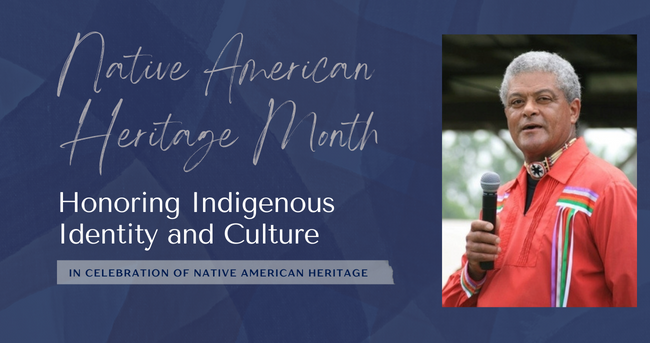Honoring Delaware’s Native American heritage

Long before colonial settlers reached American shores, Native American tribes had already established a long history. While this important part of American history may have been overshadowed in years past, the Division of Historical and Cultural Affairs hopes to do a better job in the future in being more inclusive of the histories of all people, places and important events.
For National Native American Heritage Month, celebrated nationally in November, we’d like to explore some past and present facts of the local tribes that have called the Delaware region home for well over 10,000 years.
There are four main groups of Native American people that claim the Mid-Atlantic (including Delaware) as their home: The federal Delaware Tribe of Indians and Delaware Nation, both now based in Oklahoma, and the state-recognized Nanticoke Indian Association and the Lenape Indian Tribe of Delaware and the Nanticoke Lenni-Lenape of New Jersey, as well as the Stockbridge Munsee of Wisconsin, the Moravian Delaware Nation of Ontario Canada and the Munsee-Delaware Nation of Ontario Canada for the broader region.
Native American history isn’t just something for textbooks, though. Native communities still exist in the State of Delaware today, and Lenape Indian Tribe of Delaware Chief Dennis Coker said they’re still working on educating the public about their tribal communities and their stories.
“Our story is much different than the typical Native American story, even though it’s very typical of the eastern tribal communities,” Coker said. The Native Americans living along the East Coast were the “first contact” people, people he said tend to be forgotten about in the overall narrative of Native Americans in the 20th and 21st centuries.
“By the time the calvary was rounding up those Indians on the Plains in the 1850s, we’d already had contact for 200 years,” he said. “And many people believe that the Indians all left the Mid-Atlantic or were driven away or just decided that they couldn’t live here anymore. But that’s very far from the truth, and is evidenced by the simple fact that there are two tribal communities that exist in the State of Delaware who are still in their traditional homeland, which is phenomenal.”
Coker said it’s not easy to talk about the troubled history of Native American and Colonial relationships, which led to the mainstream belief that their culture was considered “savage and heathen” for hundreds of years compared to settlers’ Christian society. It was actually still illegal for native people to celebrate their own culture until the American Indian Religious Freedom Act was passed by Congress in 1978, allowing for ceremony to return, he said.
He said early adoption of Christian beliefs by local tribes allowed Native Americans to continue providing services, such as food products and related services, to the colonizers.
“It was called hiding in plain sight, for the most part,” he said. But just by helping the Europeans, many Native Americans lost their lives due to smallpox epidemics.
In the Delaware Bay region, there are actually three Native American communities that exist today: the two state-recognized tribes in Delaware, along with the Nanticoke Lenni-Lenape Tribal Nation based in Bridgeton, New Jersey. Coker explained, all of which are linked to the Algonquin language family. For generations, these communities stayed close. During segregation, Native Americans attended their own separate churches and schools in Delaware.

And despite thousands of years of established history, it wasn’t until 2016 that the Lenape Indian Tribe of Delaware was officially recognized by Delaware state officials.
“It’s not a very pretty story,” Coker said of Native American history. And while recognizing the troubled past is part of healing, he said he always tries to focus on a more positive future. That includes plans to build an educational, environmental and cultural center with a zero-carbon footprint that will be accessible to the public to learn more about this often overlooked and critically important part of American history.
The Division is exploring ways to strengthen partnerships with Delaware’s Native American communities and to share this important part of history. Stay tuned for more information.
“If we’re going to heal as a society, then we need to unpack all that baggage we’re carrying and get it up on the table,” Coker said. “Let’s talk about it. Let’s own our part of it and then let’s move forward.”


